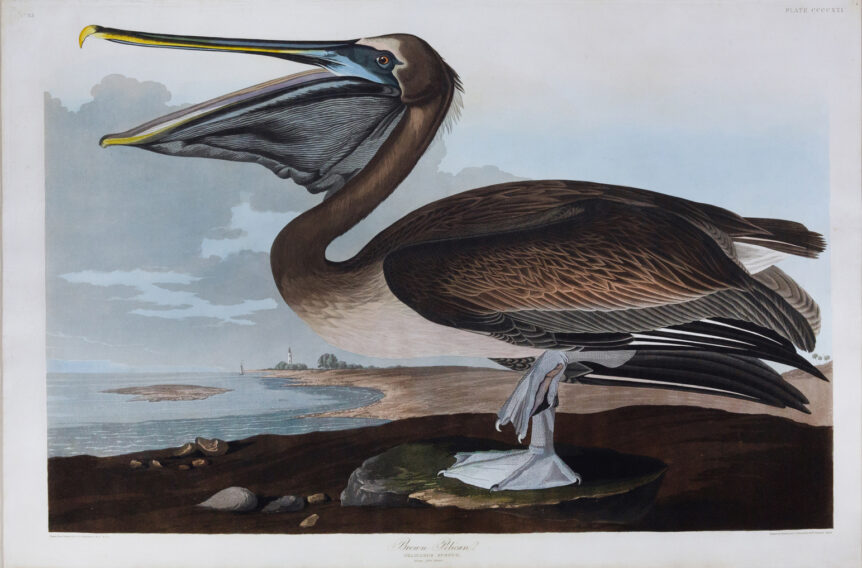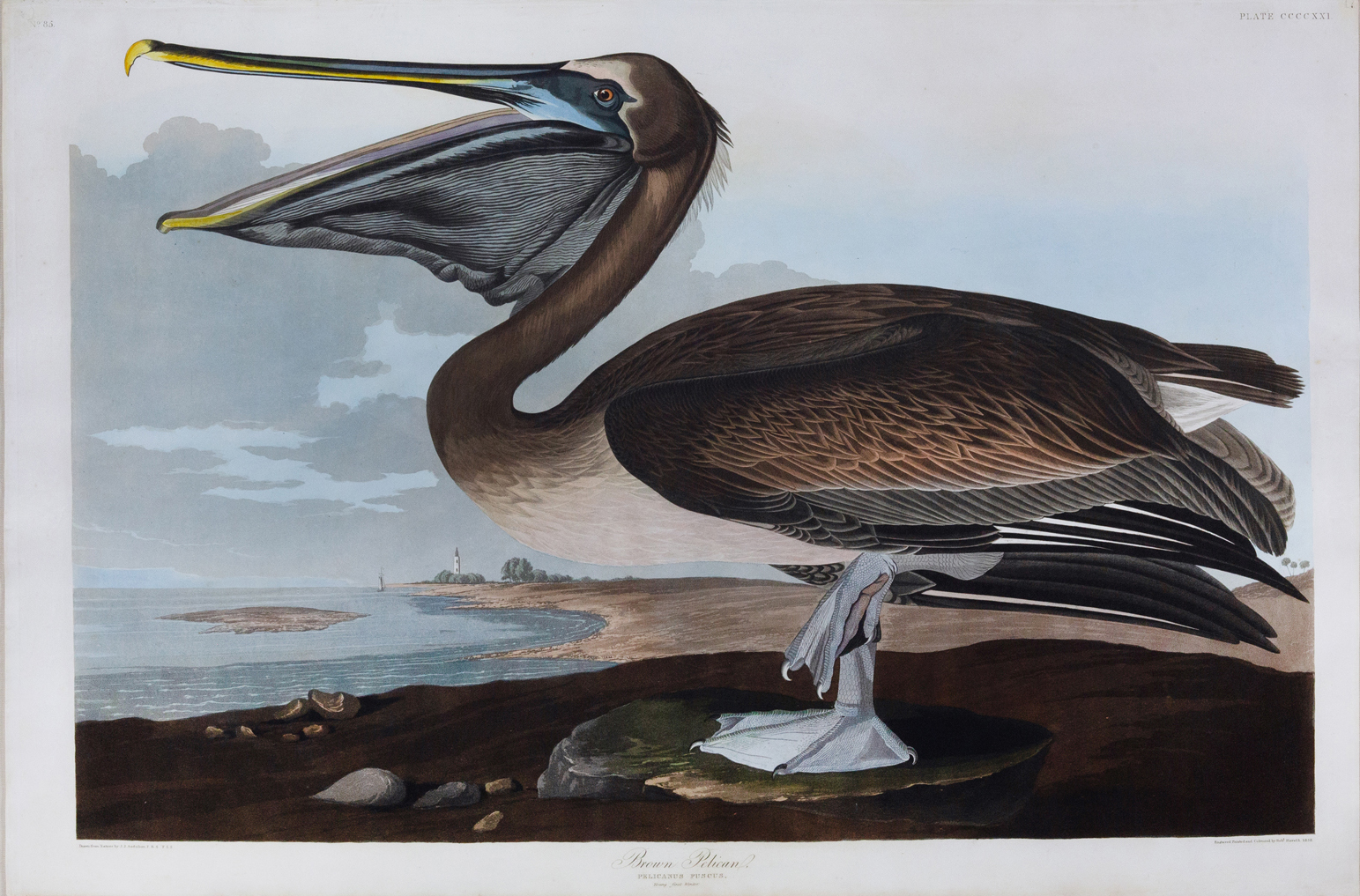
Brown Pelican, engraved by Robert Havell (1793–1878), plate CCCCXXI in Audubon’s The Birds of America (1827– 1838). Photograph courtesy of Arader Galleries, Philadelphia.
I hadn’t planned on beginning with this, but it arrived like a long slow curve ball dropping onto the front page of the New York Times: Geoffrey Chaucer (1343–1400), the headline announced, was not guilty of rape. I didn’t need to read further to guess the backstory—grievance collectors trolling through history had no doubt seized on a court document from the Middle Ages in which the Latin word raptus appeared in conjunction with a dispute involving the poet. Ignorant of, or deliberately ignoring, the fact that the Latin word was an elastic one and in Chaucer’s case did not involve sexual assault, a game of defaming the poet was afoot . . . until a few scholars set things straight.
Sad stuff, but something I think Chaucer himself would understand if he were with us today. He had a supple and sympathetic mind, and our current moment of reckonings with history—both the righteous and the reckless—would have engaged him and enlightened us.
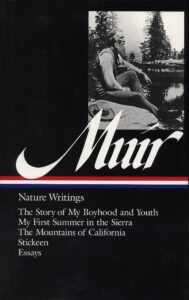
Muir: Nature Writings by John Muir (1838–1914), ed. William Cronon (1997). Photograph courtesy of the Library of America, New York.
He’s not around and I’m here, reading and thinking a lot about John James Audubon (1785–1851) and a little about John Muir (1838–1914), both of whom have come in for an overdue reckoning. It’s the overdue part that bothers me, but more of that in a minute. Both the Sierra Club and the Audubon Society have wrestled with the legacy of their respective founder and namesake recently, and in the case of Audubon published a landmark essay by the Black American ornithologist Drew Lanham that everyone—Black, white, birder, or bird phobic—should read. It’s that important.
But how and why did it take so long and, my urgent question, where do we go from here? Hike Yosemite, stalk the prothonotary warbler, and put those famous adventurers—Muir and Audubon— out of mind? I don’t think so. I want to keep my eye on them, reading their voluminous works, gazing at one’s art and the other’s parks without flinching. It’s part of how I discover where we have been, who we are, and who we want to be. They are too great to be discarded, and, in the case of Audubon, too deeply flawed to be swallowed whole.
If the editions of these men’s works, especially the authoritative editions published by the august Library of America, had set their accomplishments alongside their views on race and other social issues, we’d have learned how to live with discomfort without discarding Audubon or his riveting Missouri River journals; and we might see Muir’s near Biblical passion for preserving our vanishing flora for what it is—an indictment of all of us (except John Muir). But they haven’t and thus we have a backlash that gratifies some . . . and dismays the rest of us.
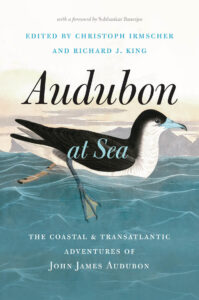
Audubon at Sea: The Coastal and Transatlantic Adventures of John James Audubon, eds. Christoph Irmscher and Richard J. King (2022). Photograph courtesy of the University of Chicago Press.
There is no dodge like the dodge that tells us that a reprehensible figure was simply “a man of his time.” From his years in and around Philadelphia, Audubon was well aware of contemporaries who were abolitionists and advocates of Indian rights. Quite simply, he was neither. Of course he often made common cause with the Indians who helped him in his pursuit of birds, but that did not prevent him from describing many of them as “disgusting,” and wishing for a deliverance that would rid the land of “all this Indian poetry.” Of the slaves he kept and sold he was chillingly matter of fact.
Muir, who felt himself divinely inspired, knew Indians had enjoyed an admirable relationship with the land and that civilization had erased it. It is possible that in the reckoning over his legacy, whatever early flaws there were may finally be judged as those of an Old Testament scold who evolved into our great wilderness guardian. The Sierra Club has tried to set this record straight, and yet a new edition of Muir that addresses such matters as tribal lands and national parks seems to me essential.
History will not let Audubon off so easily, but I am heartened by a recent book that strikes me as a model for living with this difficult figure, and for showing us who we are in relation to him. Audubon at Sea: The Coastal and Transatlantic Adventures of John James Audubon, edited by Christoph Irmscher and Richard J. King, brings us the artist’s writing about and drawings of seabirds along with an introduction, essay, and many wide-ranging and revelatory notes that supply a richer history of the man and his time than most biographies.
Audubon was not at home on the water. Frequently seasick and often frustrated by the far more difficult task of capturing seabirds than those on land, he nevertheless pursued, described, and painted his pelicans, terns, plovers, curlews, cormorants, and puffins. He ate them too.
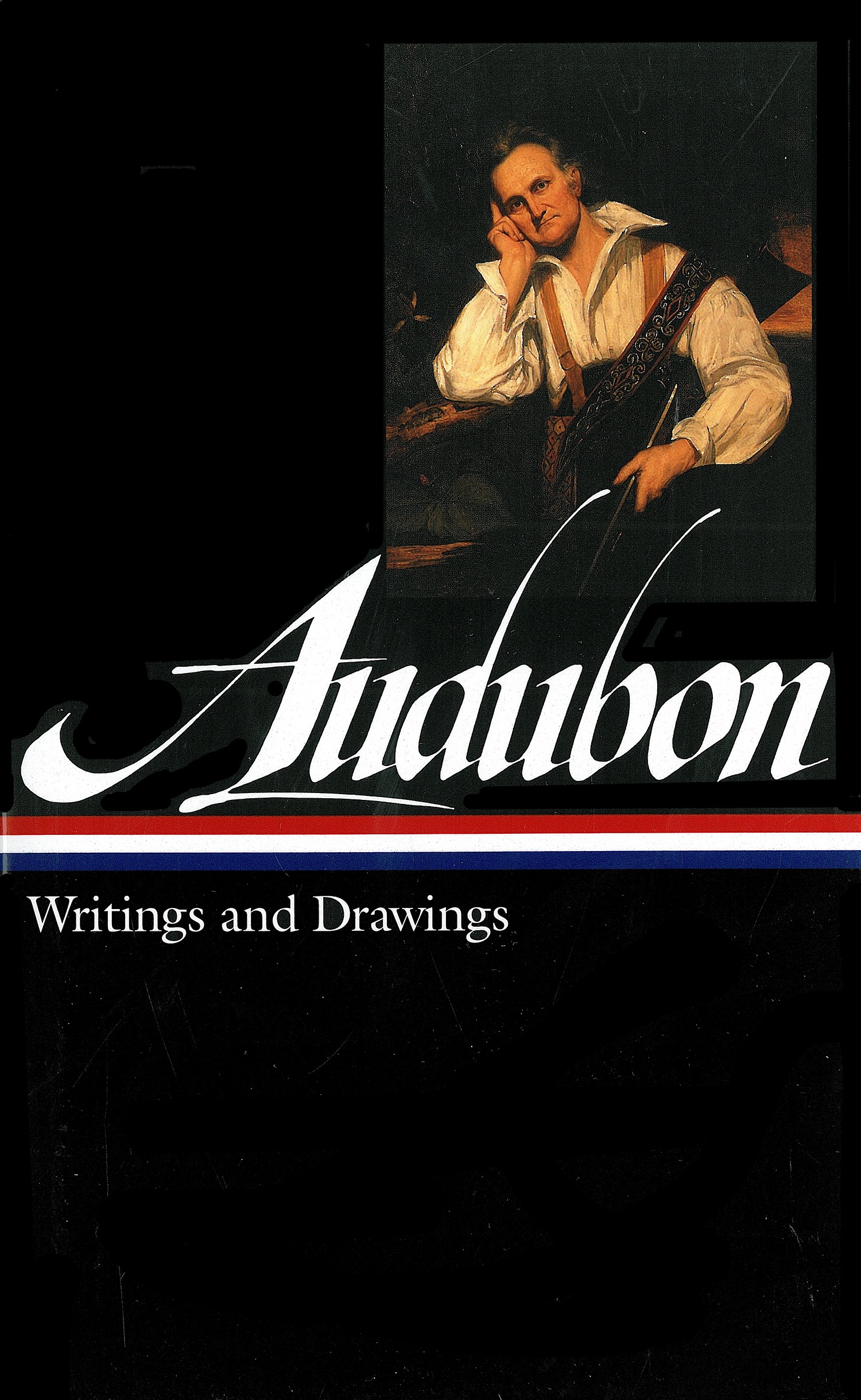
Audubon: Writings and Drawings by John James Audubon (1785–1851), ed. Christoph Irmscher (1999). Library of America photograph.
His prose is as vivid and meticulous as his art. Encounters with both Indians and Black people, such as one with a Seminole who approached his party in a canoe to offer them “trouts and turkeys” for which he received “recompense” before leaving “without a smile or bow,” can be sympathetic if condescending. The editors do not let this one pass without a note detailing as much about Audubon, Indians, and American history as you can pack into five hundred words—which turns out to be quite a lot. Other notes on ornithology, ecological history, as well as assorted biographical matters deepen things considerably.
But the persistent undertow to Audubon at Sea is ecological, laying out the contradictions of a man who killed exponentially far more species than his art required while he also expressed pain and revulsion at the waste and exploitation. He may have been at sea but Audubon knew where we were headed: “Nature herself is perishing,” he wrote, to which the editors add this coda: “In Moby-Dick, published the year Audubon died, Melville asserted what Audubon had also seen, that human acquisitiveness extends far beyond the confines of terra firma, that the oceans are humanity’s final and potentially fatal frontier.”
And so I continue to read John James Audubon and to admire his birds. I can live with the contradictions, doing so seems to me essential. He may join my pantheon of writers and artists who could not imagine us, but whose complexities have gone into making us who we are.

